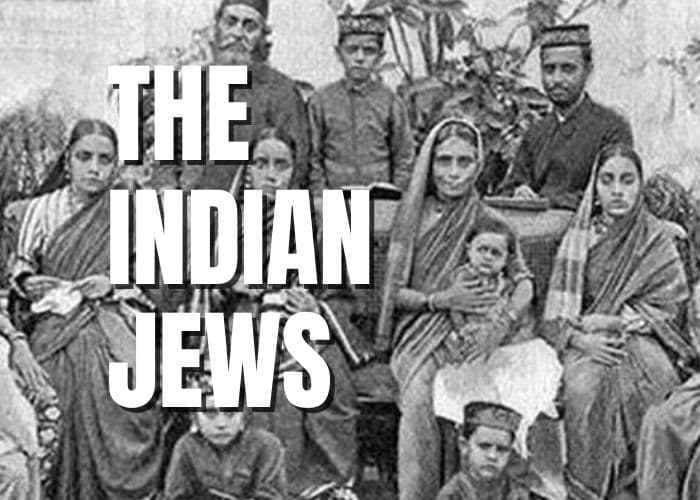The Indian Sephardic Jews are a unique and fascinating community with a rich history, culture, and traditions. They are a branch of the Sephardic Jewish community, with their origins in Spain and Portugal. Over the centuries, they migrated to various parts of the world, including India, where they established thriving communities. In this article, we will explore the history, communities, culture, religious liturgy, and notable people and accomplishments of the Indian Sephardic Jews.
- History The Indian Sephardic Jews have a long and fascinating history, dating back to the time of the Spanish Inquisition in the 15th century. Many Sephardic Jews were forced to flee Spain and Portugal to escape persecution and seek refuge in other parts of the world, including India. The first Sephardic Jews arrived in India in the 16th century and settled primarily in the western coastal cities of Goa and Cochin. Over time, the community spread to other parts of India, including Mumbai, Kolkata, and Chennai.
The Indian Sephardic Jews developed a unique culture and way of life, which was influenced by their Spanish and Portuguese heritage as well as the local Indian culture. They established synagogues and schools, where they preserved their religious and cultural traditions. Despite facing challenges and discrimination over the years, the community has managed to maintain its cultural identity and continue to thrive to this day.
- Communities Today Today, there are several thousand Indian Sephardic Jews living in India, primarily in Mumbai, Kolkata, and Chennai. The community is relatively small, but it is tight-knit and has a strong sense of identity and belonging. There are several synagogues and community centers where the Indian Sephardic Jews gather for religious services, cultural events, and social gatherings.
Many Indian Sephardic Jews have also migrated to other parts of the world, including Israel, the United States, and Europe. In these countries, they have established vibrant communities and continue to maintain their cultural traditions while also adapting to their new surroundings.
- Culture The Indian Sephardic Jews have a rich and diverse culture that reflects their Spanish, Portuguese, and Indian heritage. Their cuisine, music, and art are all influenced by these various cultural traditions.
Cuisine: The Indian Sephardic cuisine is a fusion of Spanish, Portuguese, and Indian flavors and ingredients. Some of the popular dishes include chicken cafreal, a spicy chicken dish, sorpotel, a pork dish, and vindaloo, a spicy curry dish. They also have unique sweets and desserts, such as bebinca, a layered cake made with coconut milk and sugar.
Music: The Indian Sephardic music is a unique blend of Spanish, Portuguese, and Indian music traditions. They have their own style of traditional songs and dances, which are performed at weddings, religious festivals, and other special occasions. The music often features instruments such as the violin, guitar, and tabla.
Art: The Indian Sephardic Jews have a rich artistic tradition, with a focus on embroidery and textile arts. They are known for their intricate designs and colorful patterns, which are used in clothing, accessories, and home decor.
- Religious Liturgy The Indian Sephardic Jews follow the Sephardic tradition of Judaism, which is based on the customs and practices of the Jews of Spain and Portugal. They have their own unique liturgy, which incorporates elements of Spanish, Portuguese, and Indian culture. The community has several synagogues where they gather for religious services and festivals.
One of the most important festivals in the Indian Sephardic Jewish calendar is Passover, which commemorates the Exodus of the Israelites from Egypt. The community observes the festival with a traditional Seder meal, which includes special foods and rituals.
- Notable People and Accomplishments The Indian Sephardic Jewish community has produced several notable people who have made significant contributions to various fields. Here are a few examples:
David Sassoon: David Sassoon was a prominent businessman and philanthropist who played a key role in the development of Mumbai in the 19th century. He was born in Baghdad and moved to India in the early 19th century. He established the Sassoon family business, which included trading in textiles, opium, and real estate. He was also a major benefactor of the Indian Jewish community and funded the construction of several synagogues and schools.
Ezekiel Isaac Malekar: Ezekiel Isaac Malekar was a prominent Indian Jewish leader who played a key role in the preservation and promotion of Jewish culture and heritage in India. He was the head of the Judah Hyam Synagogue in New Delhi and was also involved in the establishment of the Indian Jewish Heritage Centre. He was awarded the Padma Shri, one of India’s highest civilian awards, in 2000 for his contributions to society.
Nissim Ezekiel: Nissim Ezekiel was a prominent Indian poet and literary critic who was born in Mumbai to a Jewish family. He was one of the founders of the Indian literary journal “Quest” and was known for his satirical and humorous poetry. He was awarded the Sahitya Akademi Award, one of India’s highest literary honors, in 1983.
Asha Gawli: Asha Gawli is a prominent Indian Sephardic Jewish singer who is known for her unique blend of Indian and Sephardic music. She has released several albums and has performed at various music festivals and events around the world. She has also been involved in the promotion of Indian Jewish culture and heritage and has worked to preserve the community’s traditions and customs.
Conclusion The Indian Sephardic Jewish community is a unique and vibrant community with a rich history, culture, and traditions. Despite facing challenges and discrimination over the years, the community has managed to maintain its cultural identity and continue to thrive. The Indian Sephardic Jews have made significant contributions to various fields, including business, literature, music, and philanthropy. Their unique blend of Spanish, Portuguese, and Indian cultural traditions has produced a fascinating and diverse community that is an important part of India’s cultural mosaic.








Ohr HaChaim Yomi – Emor